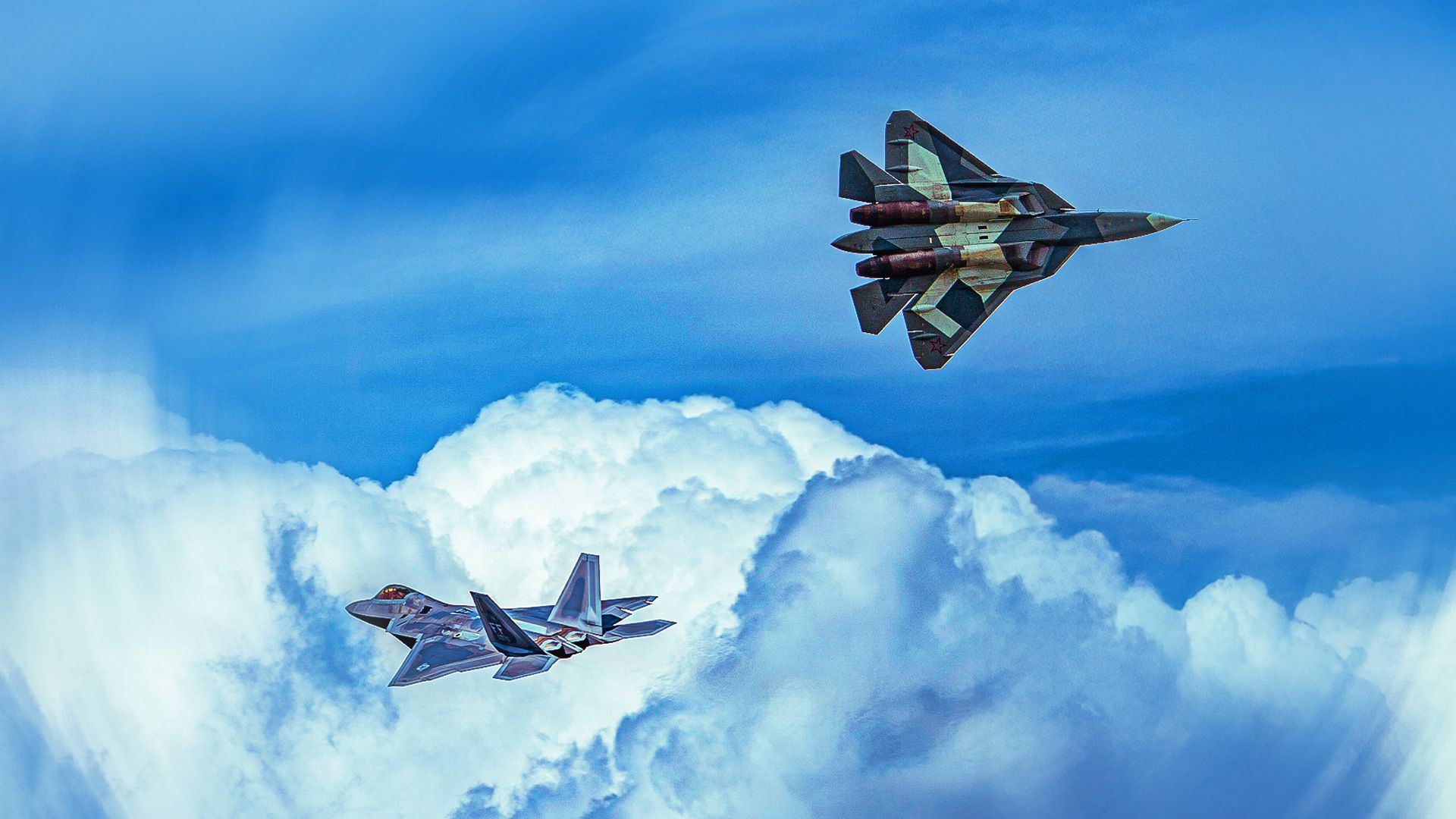World
F-22 Raptor vs. Su-57 Felon: The 2025 Fighter Jet Showdown

The competition between the Lockheed Martin F-22 Raptor and the Sukhoi Su-57 Felon highlights the evolving landscape of military aviation as both jets represent cutting-edge fifth-generation fighter technology. While the F-22 has been operational since December 15, 2005, the Su-57 entered service in December 2020, marking a significant advancement for Russian military capabilities. Both aircraft are designed for stealthy, multirole operations, but they possess distinct advantages that reflect their respective military strategies.
The F-22 Raptor is recognized as one of the stealthiest aircraft in the world, enabling the United States Air Force (USAF) to maintain air dominance. With a radar cross-section that is notably low, the F-22 is exceptionally difficult to detect, allowing it to engage targets effectively without being spotted. Its technological advancements are bolstered by the AN/APG-77 active electronically scanned array (AESA) radar, which is integrated into a sophisticated sensor suite that informs its operational strategy of “first look, first shot, first kill.” These features allow the F-22 to operate as a stealthy sniper, maximizing mission effectiveness.
Technical Specifications and Costs
The F-22 boasts impressive specifications: it has a wingspan of 44 ft 6 in (13.6 m), a length of 62 ft 1 in (18.9 m), and can reach speeds exceeding Mach 2. Estimated costs are significant; the flyaway price is around $143 million, and when considering research and development, the true cost can soar to as high as $350 million per aircraft. With a production run from 1996 to 2011, only 195 F-22s were ultimately built due to high costs and strict export regulations.
In contrast, the Su-57 Felon has been designed to replace the aging Su-27 Flanker family. Although it completed its maiden flight in 2010, the aircraft’s full operational capabilities are still being developed. With a wingspan of 46 ft 3 in (14.1 m) and a length of 65 ft 11 in (20.1 m), the Su-57 matches the F-22 in speed, achieving similar maximum velocities. The estimated unit cost for the Su-57 is around $50 million, significantly lower than that of the F-22, although only about 40 units are believed to be operational as of late 2025.
Both aircraft face challenges related to production and operational deployment. The F-22 was originally intended to have a fleet of 750 units, but rising costs led to a significant reduction. Meanwhile, the Su-57 has encountered technical issues and production delays, exacerbated by ongoing economic sanctions.
Capability Comparison and Strategic Implications
While both jets utilize stealth technology, their design philosophies diverge. The F-22 emphasizes stealth and first-strike capabilities, making it a formidable opponent in air superiority roles. Its radar cross-section measures approximately 0.0001 m2, while the Su-57’s radar cross-section is about 0.5 m2. This difference means the F-22 is generally more difficult for enemy radar systems to detect.
The Su-57, on the other hand, has been designed with a broader multirole capability in mind. It features advanced sensors, including the N036 Byelka radar system, and its armament can accommodate a diverse range of munitions, enabling it to engage targets on both air and ground fronts. Its versatility in carrying both air-to-air missiles and precision-guided bombs enhances its operational flexibility.
Cost-effectiveness is another critical factor in evaluating these platforms. The Su-57’s cost per flight hour is estimated at $24,000, which is significantly lower than the F-22’s, which can exceed $80,000 per hour. This disparity in operational costs could influence a nation’s decision on which aircraft to deploy, especially in prolonged conflicts where budget constraints are paramount.
In conclusion, both the F-22 Raptor and Su-57 Felon represent advanced military technology with distinct advantages and disadvantages. The F-22’s unmatched stealth capabilities and first-strike doctrine make it a premier air superiority fighter, while the Su-57’s lower cost and multirole versatility offer Russia a powerful tool for various combat scenarios. As both nations continue to develop their respective fleets, the future of air combat will likely be influenced by advancements in technology, production capabilities, and geopolitical dynamics.
-

 Lifestyle1 week ago
Lifestyle1 week agoSend Holiday Parcels for £1.99 with New Comparison Service
-

 Science2 months ago
Science2 months agoUniversity of Hawaiʻi Leads $25M AI Project to Monitor Natural Disasters
-

 Science2 months ago
Science2 months agoInterstellar Object 3I/ATLAS Emits Unique Metal Alloy, Says Scientist
-

 Science2 months ago
Science2 months agoResearchers Achieve Fastest Genome Sequencing in Under Four Hours
-

 Business2 months ago
Business2 months agoIconic Sand Dollar Social Club Listed for $3 Million in Folly Beach
-

 Politics2 months ago
Politics2 months agoAfghan Refugee Detained by ICE After Asylum Hearing in New York
-

 Business2 months ago
Business2 months agoMcEwen Inc. Secures Tartan Lake Gold Mine Through Acquisition
-

 Health2 months ago
Health2 months agoPeptilogics Secures $78 Million to Combat Prosthetic Joint Infections
-

 Lifestyle2 months ago
Lifestyle2 months agoJump for Good: San Clemente Pier Fundraiser Allows Legal Leaps
-

 Science2 months ago
Science2 months agoMars Observed: Detailed Imaging Reveals Dust Avalanche Dynamics
-

 Health2 months ago
Health2 months agoResearcher Uncovers Zika Virus Pathway to Placenta Using Nanotubes
-

 Entertainment2 months ago
Entertainment2 months agoJennifer Lopez Addresses A-Rod Split in Candid Interview









